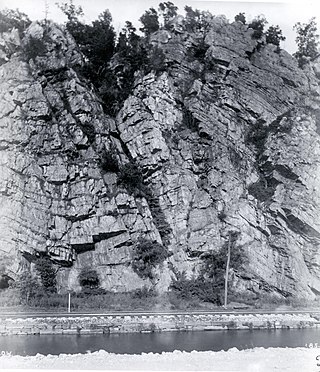Top Qs
Timeline
Chat
Perspective
Chickies Formation
Mapped bedrock unit in the United States From Wikipedia, the free encyclopedia
Remove ads
The Cambrian Chickies Formation is a mapped bedrock unit in Pennsylvania, New Jersey, and Maryland. It is named for Chickies Rock, north of Columbia, Pennsylvania, along the Susquehanna River.
Remove ads
Description
The Chickies Formation is described as a light-gray to white, hard, massive quartzite and quartz schist with thin interbedded dark slate at the top. Included at the base is the Hellam Conglomerate Member. It is a rare metamorphic rock that has fossils; Skolithos is found throughout the formation.[1]
Depositional age
Relative age dating places the Chickies in the Lower Cambrian Period, deposited between 542 and 520 million years ago (±2 million years).[2]
Economic geology
The Chickies is quarried as a building stone and for aggregate. The stone used to build the restrooms at Valley Forge National Historical Park is Chickies quartzite.[3]
- Specimen of Chickies Banded Slate. Shows older folded schistosity parallel to bedding cut by younger cleavage inclined to bedding.
- Specimen of mica schist from upper beds of Chickies Quartzite. Shows stretched epigenetic tourmaline.
- Cobble bed in Hellam Conglomerate Member
See also
References
Wikiwand - on
Seamless Wikipedia browsing. On steroids.
Remove ads




